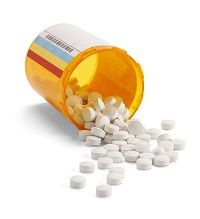Survey Reveals Many Americans Blame Overprescribing Painkillers for Epidemic
With a new study showing that 4 out of 10 US adults know someone who has battled prescription painkiller abuse during the last 5 years, concerns about the rising epidemic are more prominent than ever.

With a new study showing that 4 out of 10 US adults know someone who has battled prescription painkiller abuse during the last 5 years, concerns about the rising epidemic are more prominent than ever.
The Harvard University research, led by Robert J. Blendon, ScD, acknowledged the public perception of prescription drugs. The team polled people from across the country to evaluate how they viewed the possibility of dependency and abuse as well as the harmful effects.
“For much of the public, the issue of prescription painkiller abuse is not just a remote concern; it’s a problem they see in their personal lives,” Blendon, Richard L. Menschel professor of health policy and political analysis professor at the Harvard T.H. Chan School of Public Health, said in a news release.
The consequences of drug abuse extend past just the individual. The researchers reported that of the percentage of people who know someone with an abuse problem, 67% saw a negative effect on family life, 58% on work life, and 55% on health. Also, 21% said that the addiction led to death.
Not only did the report show that many people have personal ties to drug addiction, but it also divulged alarming numbers on the image of painkillers. The poll indicated that Americans believe that major causes of prescription drug abuse are:
- Too easy to obtain the drugs illegally: 55%
- Too easy to obtain the drugs from those who save pills: 45%
- Overprescribed or given in larger quantities than need: 45%
In addition, more Americans are worried about the abuse of prescription drugs like OxyContin and Vicodin (51%) than they are about heroin (45%). This study verified past research proving that patients crave more information on medication options and opioid dependency. Michael Botticelli, director of National Drug Control Policy, explained that they are well aware of the need to address this situation.
“That’s why the Obama Administration’s 2011 Prescription Drug Abuse Prevention Plan focused on provider education on pain and substance use disorders, prescription drug monitoring systems, safe drug disposal, and smart-on-crime enforcement,” Botticelli said.
While similarities emerged from the poll when it came to painkiller trends, participants were not unanimous on what to do about the problem. The data demonstrated that 48% said that their state government should make health insurance providers cover drug addiction treatment programs more thoroughly, but 46% opposed the idea.
“We are also working with Federal, State and local partners to increase access to effective treatment, while reducing overdoses and other consequences of this epidemic,” Botticelli confirmed.